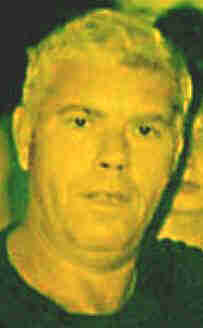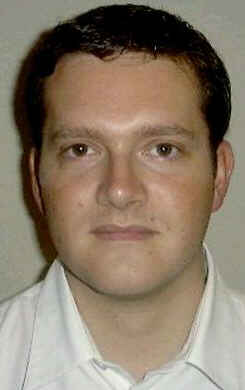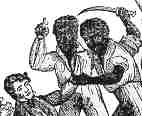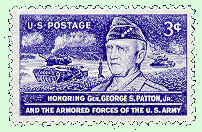 Deaths which
occurred on a November 11:
Deaths which
occurred on a November 11:
2003:: 6 Iraqis including the terrorist who was placing
a bomb on the side of a street in British-occupied Basra, Iraq, and which
explodes apparently prematurely, destroying a minibus. Four Iraquis are
injured.
2002:: 18 of the 29 passengers and 5 crew members aboard
a Laoag International Airlines Fokker 27 commuter plane which crashes
into 11-meter-deep Manila Bay 5 minutes after its 06:15 takeoff.
2002 Nafez Meshaal, 2, Palestinian boy shot in the abdomen
while playing ball at 19:00, by Israeli soldiers, in the Tul Al Sultan
neighborhood of Rafah, Gaza Strip. Three Palestinians are wounded.
2002 Mohammed Najja, 8, Palestinian boy, from being shot
by Israeli soldiers on 17 October 2002 in Khan Yunis, Gaza Strip.
2001 Aharon Usishkin, 50, [photo >]
shot by Palestinian gunman in revenge for Israelis killing one of his
relatives. Usishkin, the security officer in the central Israel community
of Kfar Hess about 10 km north of Kfar Sava and 20 km northwest of the
Palestinian city of Qalqilyah in the West Bank, was called to the entrance
of the community to investigate a suspicious man. As he arrived the man
opened fire on him and a vehicle containing two other people, before fleeing
into the surrounding fields. The gunman had left a note behind saying
that the shooting was a revenge.
 2001
Johanne Sutton of Radio France Internationale, Pierre
Billaud [< photo] of RTL Radio, and
Volker Handloik, a freelance reporter for Stern newsmagazine.
Near Taloqan, capital of Takhar in Afghanistan, in the dark after nightfall,
they were in a group of foreign correspondents being taken by the Northern
Alliance to see trenches falsely said to have been abandoned by the Taliban.
2001
Johanne Sutton of Radio France Internationale, Pierre
Billaud [< photo] of RTL Radio, and
Volker Handloik, a freelance reporter for Stern newsmagazine.
Near Taloqan, capital of Takhar in Afghanistan, in the dark after nightfall,
they were in a group of foreign correspondents being taken by the Northern
Alliance to see trenches falsely said to have been abandoned by the Taliban.
The armored personnel on top of which they were sitting comes under attack
by a Taliban rocket-propelled grenade, swerves to avoid it, and the three
fall off, while the vehicle escapes with its other occupants unhurt. .
2000: 155 skiers as cable car catches fire at 09:30,
650 m inside tunnel up the Kitzsteinhorm mountain, Salzburg province,
Austria. 8 persons escape alive.
2000 Nguyen Trong Thanh, 59, from choking and severe
blows to the head by Vu Truong Giang, 28, a former employee of the Vietnamese
Planning and Investment Ministry, Thanh is killed at his Hanoi office
after refusing to give up nude photographs of Giang's girlfriend he had
taken during a five-year romantic relationship with her that lasted until
1998. The girlfriend, Vu Tra My, 27, is present. She would not be charged
but, on 19 September 2001, Giang would be sentenced to 12 years in prison.
Thanh achieved fame as a photographer during the Vietnam War during which
he spent five years working on the Ho Chi Minh Trail.
1976 Alexander “Sandy” Calder, US kinetic artist,
painter, sculptor, and printmaker, in love with the color red, born on
22 July 1898. — MORE
ON CALDER AT ART “4” NOVEMBER
with links to images.
1962 Rene Coty, 80, President of France
1954 Carslaw,
mathematician.
1951 Tsiang Beda, Jesuit bishop of Shanghai, in a communist
prison. He had refused to head the Chinese "reform" church.
1917 Lydia Paki Kamekeha Liliuokalani, born on 02 September
1838, Queen of the Hawaiian Islands from the 1891 death of her brother
King Kalakaua until 1893, when she was imprisoned, forced to abdicate
on 24 January (or else she and her supporters would be killed), and subjected
to a mockery of a trial by treacherous US planters who sought annexation
to the United States, which they obtained in 1898 after proclaiming the
Republic of Hawaii in 1894. — LILIUOKALANI ONLINE: Hawaii's
Story by Hawaii's Queen (1898) [her autobiography rather than
a history of Hawaii]
1911 Felix François Georges Philibert Ziem (or
Siem), French painter, specialized in Veniscapes,
born on 26 (21?) February 1821. — MORE
ON ZIEM AT ART “4” NOVEMBER
with links to images.
1908:: 360 mineros por una explosión de grisú
en la mina Radbod-Hamm, en Westfalia.
1904 Valentine Cameron Prinsep, British Pre-Raphaelite
painter born on 14 February 1838 (1836?). — MORE
ON PRINSEP AT ART “4” NOVEMBER
with links to images.
| 1887 August Spies, George Engel,
Adolph Fisher, and
Albert Parsons, hanged for "inciting" the Haymarket riot, at which they were not present. The evidence against them was their anarchist ideas and literature. With the noose around his neck, Fischer cried out: "Hurrah for Anarchy! This is the happiest moment of my life." Parsons said: "Will I be allowed to speak, O men of America? Let me speak, Sheriff Matson! Let the voice of the people be heard!" From inside his hood, Spies made a short statement which would be heard for decades in workingclass circles: "The time will come when our silence will be more powerful than the voices you strangle today." The executions aroused people all over the country. There was a funeral march of 25'000 in Chicago. Four labor activists accused of murdering eight Chicago police officers at the Haymarket Square Riot are executed by hanging in Illinois. On 04 May 1886, a labor rally was held in Chicago's Haymarket Square to protest the killing of four strikers by the Chicago police the day before. Midway into the demonstration, made up of mostly German-born workers, a squad of nearly two hundred policemen arrived to break up the rally. By this time the crowd had thinned out because of rain. As the police began to forcibly disperse the three hundred remaining protestors, a bomb was thrown into the advancing police by a person never positively identified. Policeman Mathias J. Degan died almost instantly, seven other officers died later, and over sixty others were wounded. In response to the bombing, the police fired wildly into the crowd, killing eight people and injuring dozens more, including a number of fellow officers. The Haymarket Square Riot set off a national wave of xenophobia, as hundreds of foreign-born radicals and labor leaders were rounded up in Chicago and elsewhere. A grand jury eventually indicted thirty-one suspected labor radicals in connection with the bombing, and eight men were convicted in a controversial and sensational trial. Judge Joseph E. Gary imposed the death sentence on seven of the men and the eighth was sentenced to fifteen years in prison. Samuel Fielden, Adolph Fischer, August Spies, and Albert Parson, executed by hanging, were the first labor activists to be executed in America. Of the three others sentenced to death, one committed suicide on 10 November and Illinois Governor Richard J. Oglesby commuted two of the men's sentences to life imprisonment due to widespread public doubt of their guilt. In 1893, Governor John P. Altgeld pardoned the three activists still living. |
1856 John Middleton, English painter and etcher born on 09 Jan 1827 (or in 1828?).
 1831
Nat Turner former slave, led a revolt, hanged 1831
Nat Turner former slave, led a revolt, hangedNat Turner, the leader of a bloody slave revolt three months before, is hanged in Jerusalem, Virginia. Turner, a slave born on 02 October 1800, and educated minister, believed himself chosen by God to lead his people out of slavery. On 21 August 1831, Nat Turner initiated his slave uprising by slaughtering his owner Joseph Travis and Travis's family.  With
seven followers, Turner set off across the countryside, hoping to
rally hundreds of slaves to join his insurrection. Turner planned
to capture the county armory at Jerusalem, Virginia, and then march
50 km to Dismal Swamp, where his rebels would be able to elude their
pursuers. During the next two days and nights, Turner and 75 followers
rampaged through Southampton County, killing about 60 whites. Local
whites resisted the rebels, and then the state militia — consisting
of some 3000 men — crushed the rebellion. With
seven followers, Turner set off across the countryside, hoping to
rally hundreds of slaves to join his insurrection. Turner planned
to capture the county armory at Jerusalem, Virginia, and then march
50 km to Dismal Swamp, where his rebels would be able to elude their
pursuers. During the next two days and nights, Turner and 75 followers
rampaged through Southampton County, killing about 60 whites. Local
whites resisted the rebels, and then the state militia — consisting
of some 3000 men — crushed the rebellion. Only a few kilometers from Jerusalem, Turner and all his followers were dispersed, captured, or killed. In the aftermath of the rebellion, over one hundred Blacks were lynched by hanging, though most of them had not participated in the revolt. Turner himself was not captured until 30 October 1831 (by Benjamin Phipps), and after confessing without regret to his role in the bloodshed, he was, on 05 November 1831, tried, convicted, and sentenced to death. On 11 November 11, he is hanged in Jerusalem. Turner's rebellion was the largest slave revolt in US history and led to a new wave of oppressive legislation prohibiting the movement, assembly, and education of slaves. — MORE — NAT TURNER ONLINE: The Confessions of Nat Turner — The Confessions of Nat Turner {published by Thomas Gray as The Confessions of Nat Turner, as fully and voluntarily made to Thomas R. Gray, two weeks after Turner was executed. Turner’s authorship and/or approval of the narrative is questionable for many reasons, one of which is his inability to read the work; another is the fact that he was already dead when the work was published.) |
1778: 40 persons, killed by Iroquois Indians led by William Butler, in NY, in Cherry Valley Massacre.
1772 Jan Morits Quinckhardt, Dutch painter and dealer born on 28 January 1688.
1761 Jan Ten Compe, Dutch painter, draftsman, and dealer, born on 14 February 1713. — more
1681 (burial) Jacob Marell, German painter, active also in the northern Netherlands, born in 1614.
1638 Cornelis Corneliszoon van Haarlem, Dutch Mannerist painter and draftsman born in 1562. — MORE ON CORNELIS AT ART “4” NOVEMBER with links to images.
1563 Francesco Rossi del Salviati “il Cecchino”, Italian Mannerist painter born in 1510. — MORE ON SALVIATI AT ART “4” NOVEMBER with links to images.
1499 Perkin Warbeck, executed, pretender to the throne. The curious career and uncertain past of Perkin Warbeck
0537 St Silverius, Pope
0397 Martin of Tours, founder of France's first monastery.
 1885
George Smith Patton Jr., one of the great US generals of World War
II.
1885
George Smith Patton Jr., one of the great US generals of World War
II.